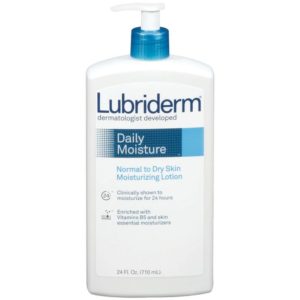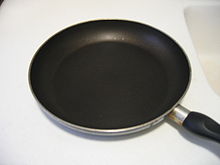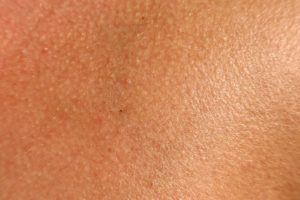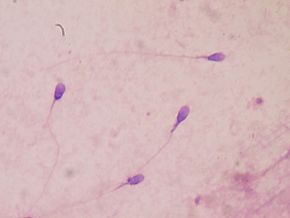 There is increasing concern over phthalates and BPA and their effects on human health. It turns out that a big source of phthalates (which are known endocrine disruptors) in humans may be fast food.
There is increasing concern over phthalates and BPA and their effects on human health. It turns out that a big source of phthalates (which are known endocrine disruptors) in humans may be fast food.
A new study looked at fast food consumption by 8877 people and found that those who reported eating more of it in the past 24 hours had urinary phthalate levels as much as 40 percent higher than those who had eaten no fast food in the 24 hours before testing. In fact, it was a dose-response relationship between fast food intake and exposure to phthalates - the more fast food, the higher the level of phthalates.
The researchers did not find an association between total fast food consumption and BPA. However, they did find an association between fast food meat intake and BPA, which corresponds to the small but growing evidence from other studies suggesting that hamburgers may be a source of BPA exposure.
These findings are of concern to all of us because phthalates and bisphenol A (BPA) are widely used industrial chemicals that may adversely impact human health. Studies detect phthalates in 98% of the US population. They are found in a wide variety of products (including plastics and personal care products), and can enter the human body via ingestion, inhalation, and absorption through the skin.
How are we exposed to them in fast food? Phthalates and BPA are typically found in food packaging and some leaches out into food. Some can also leach into food from dairy product tubing, in lid gaskets, food preparation gloves, conveyor belts, etc. Thus we ingest phthalates and BPA when we consume processed or packaged food. Fast food may be an especially important source of exposure to phthalates and BPA because it is highly processed, packaged, and handled.
Studies have demonstrated that the phthalates DEHP and DiNP are endocrine (hormone) disruptors, and that human exposure has been associated with adverse reproductive, neurobehavioral, and respiratory health effects. BPA is also an endocrine disruptor. We are all being exposed numerous ways, but the lower the levels, the better.
The good news is that once in the body, phthalates and BPA are quickly metabolized and excreted in urine, with elimination half-lives of less than 24 hours. Thus you can quickly reduce the levels in your body. And you should try.
From Science Daily: Fast food may expose consumers to harmful chemicals called phthalates
People who reported consuming more fast food in a national survey were exposed to higher levels of potentially harmful chemicals known as phthalates, according to a study published by researchers at Milken Institute School of Public Health (Milken Institute SPH) at the George Washington University.
"People who ate the most fast food had phthalate levels that were as much as 40 percent higher," says lead author Ami Zota, ScD, MS, an assistant professor of environmental and occupational health at Milken Institute SPH. "Our findings raise concerns because phthalates have been linked to a number of serious health problems in children and adults."Phthalates belong to a class of industrial chemicals used to make food packaging materials, tubing for dairy products, and other items used in the production of fast food. Other research suggests these chemicals can leach out of plastic food packaging and can contaminate highly processed food.
Zota and her colleagues looked at data on 8,877 participants who had answered detailed questions about their diet in the past 24 hours, including consumption of fast food. These participants also had provided researchers with a urinary sample that could be tested for the breakdown products of two specific phthalates--DEHP and DiNP.
Zota and her colleagues found that the more fast food participants in the study ate the higher the exposure to phthalates. People in the study with the highest consumption of fast food had 23.8 percent higher levels of the breakdown product for DEHP in their urine sample. And those same fast food lovers had nearly 40 percent higher levels of DiNP metabolites in their urine compared to people who reported no fast food in the 24 hours prior to the testing. The researchers also discovered that grain and meat items were the most significant contributors to phthalate exposure. Zota says the grain category contained a wide variety of items including bread, cake, pizza, burritos, rice dishes and noodles.
In addition, the researchers also looked for exposure to another chemical found in plastic food packaging--Bisphenol A or BPA. Researchers also believe exposure to BPA can lead to health and behavior problems, especially for young children. This study found no association between total fast food intake and BPA. However, Zota and her colleagues found that people who ate fast food meat products had higher levels of BPA than people who reported no fast food consumption.

 Yes, the chemicals in personal care products and cosmetics you use absolutely get into your body, have effects, and can be measured in the urine. Of especially big concern are the endocrine (hormone) disrupting chemicals such as phthalates, parabens, triclosan, and oxybenzone (BP-3). This study shows that even taking a 3 day break from these chemicals lowers their levels in your body. The researchers found that : "The adolescent girls in this study experienced an average within girl decline of 27-45% in urinary concentrations of certain phthalates, certain parabens, triclosan, and oxybenzone after three days of abstaining from conventional personal care products and using replacement products with labels indicating they did not contain these chemicals."
Yes, the chemicals in personal care products and cosmetics you use absolutely get into your body, have effects, and can be measured in the urine. Of especially big concern are the endocrine (hormone) disrupting chemicals such as phthalates, parabens, triclosan, and oxybenzone (BP-3). This study shows that even taking a 3 day break from these chemicals lowers their levels in your body. The researchers found that : "The adolescent girls in this study experienced an average within girl decline of 27-45% in urinary concentrations of certain phthalates, certain parabens, triclosan, and oxybenzone after three days of abstaining from conventional personal care products and using replacement products with labels indicating they did not contain these chemicals." For years stores and manufacturers have promoted the advantages of Scotchgard and Teflon nonstick coatings for pots and pans, as stain-proofing for upholstered furniture and rugs, as a water repellent for clothing, for consumer goods such as dental floss, and for grease-proof food wrappers and containers. And yes, people have been convinced - with most cookware sold today being of the nonstick type, and the popularity of sofas and rugs coated with non-stain coatings. But once again, chemicals come with a price and health effects, and unfortunately these particular chemicals are found in all of us in varying levels.
For years stores and manufacturers have promoted the advantages of Scotchgard and Teflon nonstick coatings for pots and pans, as stain-proofing for upholstered furniture and rugs, as a water repellent for clothing, for consumer goods such as dental floss, and for grease-proof food wrappers and containers. And yes, people have been convinced - with most cookware sold today being of the nonstick type, and the popularity of sofas and rugs coated with non-stain coatings. But once again, chemicals come with a price and health effects, and unfortunately these particular chemicals are found in all of us in varying levels. Flame retardants. All around us, and in us. So, so hard to avoid because they're in electronic goods, in upholstered furniture, polyurethane foam, carpet pads, some textiles, the foam in baby items, house dust, building insulation, and on and on. And unfortunately, while a number of toxic flame retardants have been phased out, it appears that the new replacements may be just as bad and are more easily inhaled (the small particles go down the air tract and into the lung tissue).
Flame retardants. All around us, and in us. So, so hard to avoid because they're in electronic goods, in upholstered furniture, polyurethane foam, carpet pads, some textiles, the foam in baby items, house dust, building insulation, and on and on. And unfortunately, while a number of toxic flame retardants have been phased out, it appears that the new replacements may be just as bad and are more easily inhaled (the small particles go down the air tract and into the lung tissue). Once again, research shows that "BPA-free" plastic does not mean it is safer than BPA plastic. Both BPA and BPS (the usual replacement for BPA) leach estrogenic chemicals into the foods and beverages, which means negative health effects when ingested. Both BPA and BPS mimic the effects of estrogen, as well as the actions of thyroid hormone. Yes, this study was done on zebrafish, but think of them as "the canaries in the mine" - if it affects them, it could affect humans also, especially developing fetuses and young children.
Once again, research shows that "BPA-free" plastic does not mean it is safer than BPA plastic. Both BPA and BPS (the usual replacement for BPA) leach estrogenic chemicals into the foods and beverages, which means negative health effects when ingested. Both BPA and BPS mimic the effects of estrogen, as well as the actions of thyroid hormone. Yes, this study was done on zebrafish, but think of them as "the canaries in the mine" - if it affects them, it could affect humans also, especially developing fetuses and young children. When we think about air pollution, we usually think about pollutants in the air that we breathe in. But there is a growing body of evidence that some pollutants found in the air, including a group of chemicals called phthalates, can be absorbed directly through the skin (
When we think about air pollution, we usually think about pollutants in the air that we breathe in. But there is a growing body of evidence that some pollutants found in the air, including a group of chemicals called phthalates, can be absorbed directly through the skin ( Recent research looked at environmental causes of male infertility, specifically endocrine-disrupting chemicals.
Recent research looked at environmental causes of male infertility, specifically endocrine-disrupting chemicals. Several people have recently asked me whether scented candles have any health effects. The answer is a big YES - they have many negative health effects, and so do other scented products such as air fresheners and dryer sheets (e,g, Bounce). All of them contain fragrances and other chemicals - all from petrochemicals (which means they are chemical products derived from petroleum). And yes - all 3 products are totally unnecessary, so ditch them for better health. View all of them as
Several people have recently asked me whether scented candles have any health effects. The answer is a big YES - they have many negative health effects, and so do other scented products such as air fresheners and dryer sheets (e,g, Bounce). All of them contain fragrances and other chemicals - all from petrochemicals (which means they are chemical products derived from petroleum). And yes - all 3 products are totally unnecessary, so ditch them for better health. View all of them as